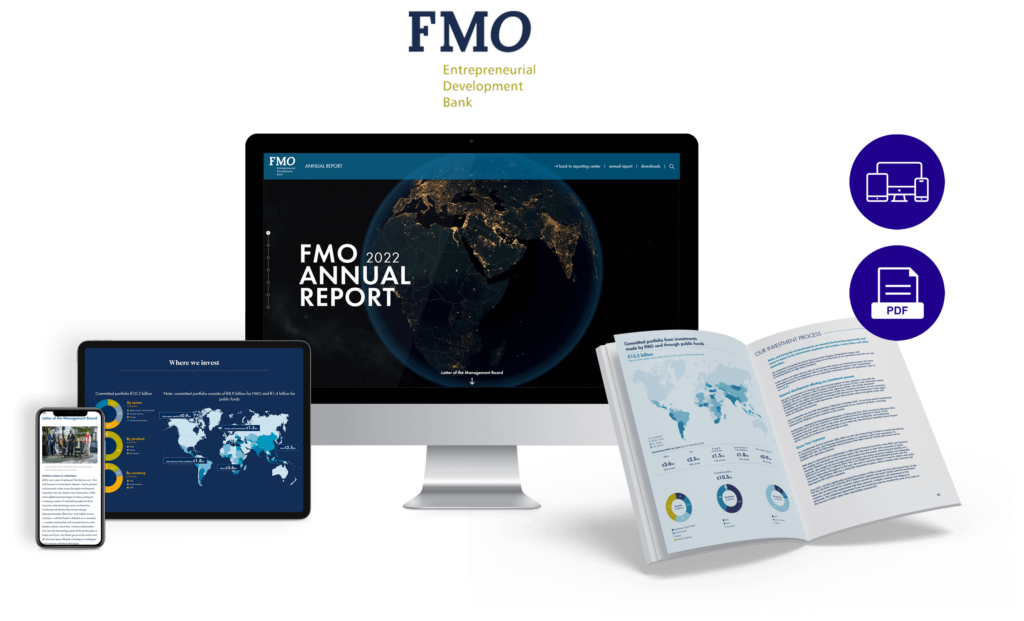How to streamline the “Last Inch” in Corporate Reporting
And why this is even more important with CSRD coming
The “last mile” in corporate reporting is where the rubber meets the road, the final steps in transforming financial and non-financial data into an annual report that everyone can grasp. This is where complexity meets clarity, involving tasks like data validation, narrative crafting, and ensuring regulatory compliance. Often, you might have heard about disclosure management systems being the answer to streamline this “last mile,” but there’s more – there’s the “last inch.”
The “last inch” in corporate reporting represents the challenging final phase where a fully designed report must be published in multiple formats, including Inline XBRL. In this article, we explore the hurdles encountered in this “last inch,” why disclosure management systems may not be the ultimate solution here, and how CSRD is set to magnify these challenges. We also offer insights into how to simplify the “last inch” of corporate reporting.
Challenges of the “Last Inch” in Corporate Reporting
Picture this: the annual report deadline is looming large. Your finance department has delivered consolidated financial statements, while other departments are contributing their own datasets. Multiple versions of Word documents with narratives are flowing in from various corners of the organization. Your task now is to harmonize all this data and content into a cohesive, visually appealing story, and ensure it undergoes the necessary auditing.
You begin by compiling initial versions using Word and Excel. Then, you send these to your creative agency, which transforms them into a draft using InDesign for the fully designed PDF. Simultaneously, you might instruct the agency to set up a dynamic website for the annual report to make it as accessible and User-friendly as possible for stakeholders. Oh, and don’t forget the digital and tagged ESEF report in Inline XBRL format, thanks to new regulations.
As your colleagues continue sending updates, the agency asks for your reviews, and the auditor requests updated drafts. You find yourself constantly copying, pasting, emailing, briefing, reviewing, and distributing revised versions of the report, all while the deadline races towards you.
You’re well aware that this process is neither secure nor efficient. Unfortunately, your current disclosure management system isn’t equipped to tackle this problem effectively. While it assists finance in compiling disclosures, it’s not the right tool for producing the fully designed, tagged and multi-formatted end version of the annual report.
CSRD makes the “Last Inch” even more complex
Regrettably, the Corporate Sustainability Reporting Directive (CSRD) is poised to add more layers of complexity to the “last inch.” Now, you’ll have to incorporate extensive sustainability data and narratives into your report. This data won’t likely be in the same format or coming from the same system as your financial data. Additionally, your report must be filed in a digital and tagged format, called Inline XBRL. If you were already dealing with ESEF compliance, this means handling two taxonomies for tagging: one for financial and another for non-financial information. If CSRD compliance is your focus, then integrating this new format into your media mix becomes paramount.
Another challenge is the strong recommendation to aim for what is known as ‘native Inline XBRL’ rather than relying on Inline XBRL generated from a converted Word or PDF file (For more information on this topic, you can read our blog post: “How to Ensure ESEF and CSRD Compliance – and Elevate Your Annual Reports with a Digital-First Approach”).
Furthermore, with your report taking on greater significance for stakeholders, prioritizing design and User-friendliness is crucial.
In summary, the need to streamline the “last inch” of corporate reporting, where you compile, tag, and design the final, multi-formatted version of your corporate report, is only going to intensify.
Streamlining the “Last Inch” with a Digital-First, multichannel publishing platform
So, how do you conquer the “last inch” challenge in corporate reporting?
One approach is to seek a comprehensive platform that handles it all: consolidating both your financial and non-financial data, offering narrative reporting features, supporting tagging with multiple taxonomies, and facilitating the publication of fully designed report versions in various formats, including a website and native Inline XBRL. However, this solution can come with a hefty price tag.
Alternatively, consider a ‘best of breed approach’:
- Continue using your financial system (or Excel) for aggregating and consolidating financial data
- Keep using your non-financial system (or Excel) for aggregating and consolidating non-financial data
- Utilize Word for initial drafts of your narrative content
- Combine content from various sources in a multichannel publishing platform that allows you to:
- Craft your final story and make layout and content adjustments yourself
- Tag your report using the latest taxonomies for ESEF and CSRD
- Collaborate with co-creators, including your creative agency, to publish fully designed versions in multiple formats, including PDF, native Inline XBRL, and a dynamic website
Is your annual reporting ready for the future?
As regulations become increasingly stringent, and stakeholder expectations rise, annual financial and non-financial reporting will grow more complex. Fortunately, innovative software solutions are emerging to transform reporting into a positive experience for your team and stakeholders.
With the right Digital-First tools, you can seamlessly integrate ESEF and CSRD compliant XBRL tags and publish your reports in multiple appealing formats, including mandatory iXBRL, PDF, dynamic websites, or InDesign. This ensures compliance while enhancing corporate communication.
Learn more about how F19 can empower your organization to create the annual report of the future using our cloud-based, Digital-First reporting platform.

